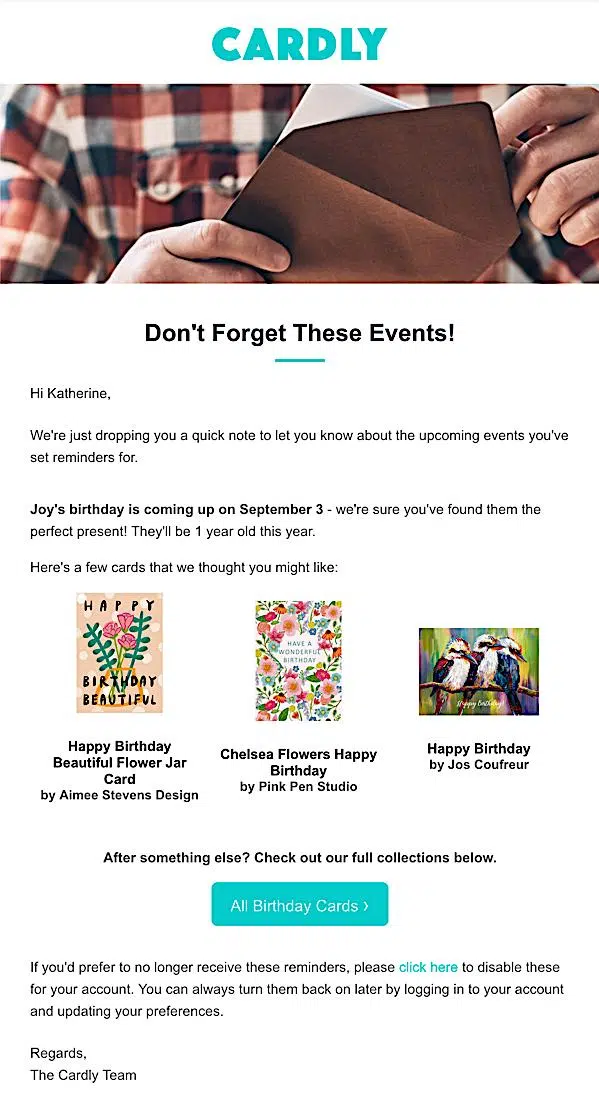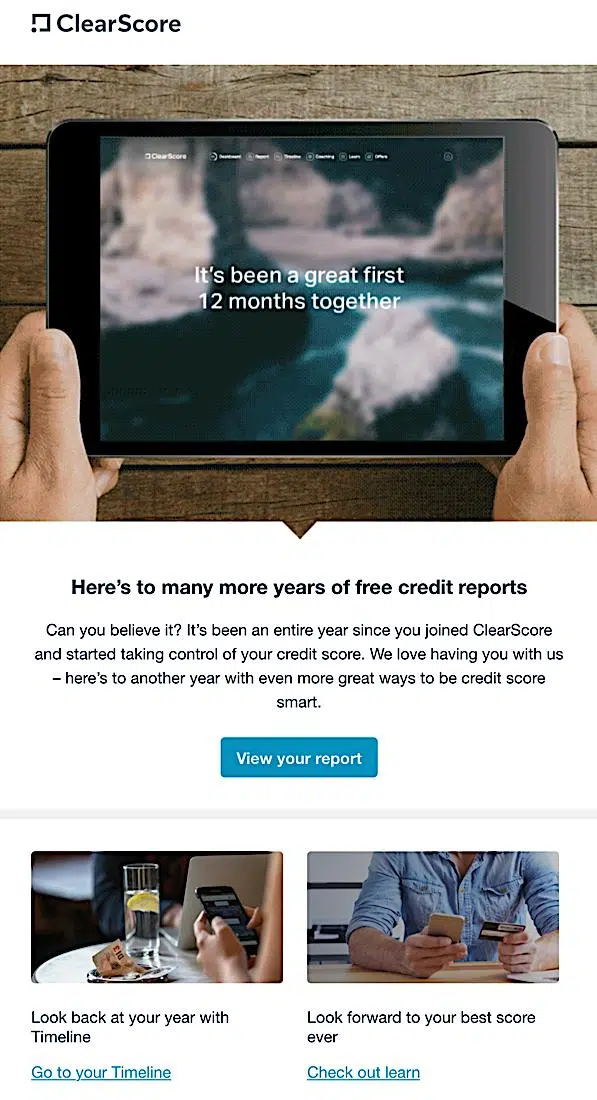How bad data can spoil good personalization
Don’t let bad data poison your email relationship with your clients. Learn how to avoid personalization failures in your email program.
In the space of three days recently, I received three individual emails that showed me brands are beginning to take the concept of “helpful marketing” seriously. That’s good news because I believe helpful marketing is the future of email marketing.
But each email had a personalization failure that shows this transition from promotional to customer-focused email marketing still has a long way to go.
These failures don’t spell the death of this nascent trend and won’t make me abandon the brands that sent the messages. But it’s clear that we as marketers need to make fundamental changes in how we manage data and automations to achieve the potential that helpful marketing offers.
3 emails, 3 problems
Email 1: Cardly

What I love about this email. Cardly sends “handwritten” greeting cards wherever and whenever you need them sent. The copy in this reminder email is spot-on for brand voice and helpful information — warm, personable and persuasive rather than promotional. (See my previous MarTech article, “Does your email copy persuade or sell?“, to learn why this is so important.)
What to fix. Cardly is nudging me to schedule a birthday card for my mum, Joy, whose birthday is September 3. So far so good. But — ahem — she’ll be a little more than “1” year old! I don’t quite know how the system calculated that because I didn’t provide her age, so perhaps that’s a default number. This error isn’t serious enough to cause doubt — although that’s not the case with the next email.
Email 2: easyJet

What I love about this email. This preflight email has a wealth of detail and reminders, all of which answer questions, confirm expectations, and help passengers avoid unpleasant surprises at the airport. It’s easy to view on a laptop or mobile, and all the flight information is correct.
What to fix. The email’s salutation and passenger information are wrong. It should reflect my partner’s name as he is the passenger. Instead, it pulled the account holder’s name — in this case, mine — into the field instead of the passenger’s name.
You can see why this would be unsettling! Is the ticket in the wrong name? Will this passenger run into problems when they try to check in for the flight? With all the chaos that accompanied summer travel this year, you can see why even one incorrect field can create panic.
Email 3: ClearScore

What I love about this email. I love account-summary emails like this because they let me review my past year of business with the brand, and it acts as a helpful nudge for me to check out my credit score — something I might not do unless I had a specific reason.
The email gives customers several relevant reasons to click on the email and visit the brand’s website. Emails like this can also generate more engagement-boosting opens and clicks, and more first-party data from subsequent website visits.
What to fix. The opening email thanks me for having been a ClearScore customer for a year. But I’ve actually been a credit-report customer for much longer. As with the Cardly example, this mistake isn’t enough to turn me off the brand or wonder if it were a phishing or spear phishing attempt. If I had to guess, I would say that the brand launched this email automation only recently and had only 12 months of data to call on.
Helpful marketing gone wrong
All three emails are excellent examples of helpful marketing because they are geared to specific points in the customer journey with the brand, deliver important information and sell indirectly.
But they all failed in a way because they pulled the wrong data or incorrectly interpreted the data they did have. This indicates the corresponding email program wasn’t thought through far enough or updated recently to account for all the data variables programs like these can present.
You might say this is helpful marketing gone wrong, where a good email can poison your email relationship with your clients because it’s driven by bad data.
Why helpful marketing matters
I developed this idea of marketing that goes beyond promotional or informational marketing because I believe that email is uniquely suited to do more than sell.
Helpful marketing is a “win-win” proposition because it benefits both your customers and your brand. When you help your customers achieve their objectives, they will help you achieve yours. That is, they’ll turn to us more often when they need our products and services because they know they’ll succeed.
This concept got a big boost in the early days of the pandemic, when brands sought new ways to stay connected with customers who were stressed, anxious, locked down and looking for answers.
Truly helpful marketing runs on two key engines: data and automation. Data provides the personalization that creates a truly unique and relevant message, whether it’s a purchase confirmation, troubleshooting message or appointment reminder. Automation allows marketers to achieve this relevance at scale for every email address in their databases.
Your email content is the face of helpful marketing. However, you need to do back-end work to ensure your automations pull the correct data. As these three email examples show, we’re not quite there yet!
How to use helpful marketing in email
Helpful marketing is a key driver of a good customer experience with your email program. It recognizes that “Buy now” is not always the right message to send.
To make your emails more helpful, start with this question: “How do my emails help my customers achieve their own goals and objectives and be successful in the parts of their lives that my products or services touch?”
The question is simple, but the answers, and the engineering work required to create those helpful emails, might be complex.
Elements in your email help your customers achieve their goals, such as local store locations and hours, a localized map, “how to buy” advice and the like. Your messages can also help customers buy more successfully from you, increasing the chance that they will select the products that will work best for them. This increases satisfaction and means fewer products returned or services canceled.
A lot is at stake, both for revenue and customer loyalty. That’s why getting the personalization right in an automated email is absolutely essential.
Audit your automations for accuracy
Whether you call it helpful marketing, customer-experience marketing, lifecycle or journey marketing or something else, you should take time at least once a year to audit every automation to make sure it’s pulling the correct data.
Also, consider all of the data variables that go along with personalization. The easyJet example highlights the perils of capturing the wrong name, but it’s a situation that any retail or e-commerce brand faces when one person buys a product for someone else.
Check to be sure your email fields are tied to the right data. To increase accuracy, you might need to add an additional data field or two as part of the transaction process.
Helpful marketing pays off
That’s probably what you’re thinking: Is all this work worth the effort? Yes, it absolutely is. In research my company did with Liveclicker, we found that customers were more likely to open and read emails that scored higher on helpfulness.
Further, 70% of marketers who used the advanced personalization that is part of helpful marketing saw their campaigns earn an average of 200% ROI, according to a 2020 study by KoMarketing.
If nothing else, your email audit will help you spot and correct data failures and automations that run amok — and that by itself can help you improve your email program. Time well spent!
First published on Martech.org on August 2022

